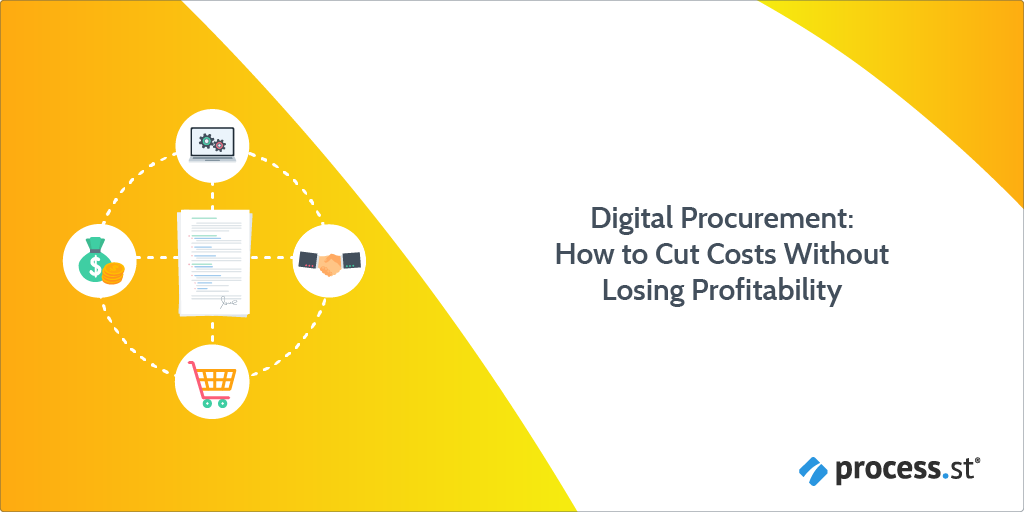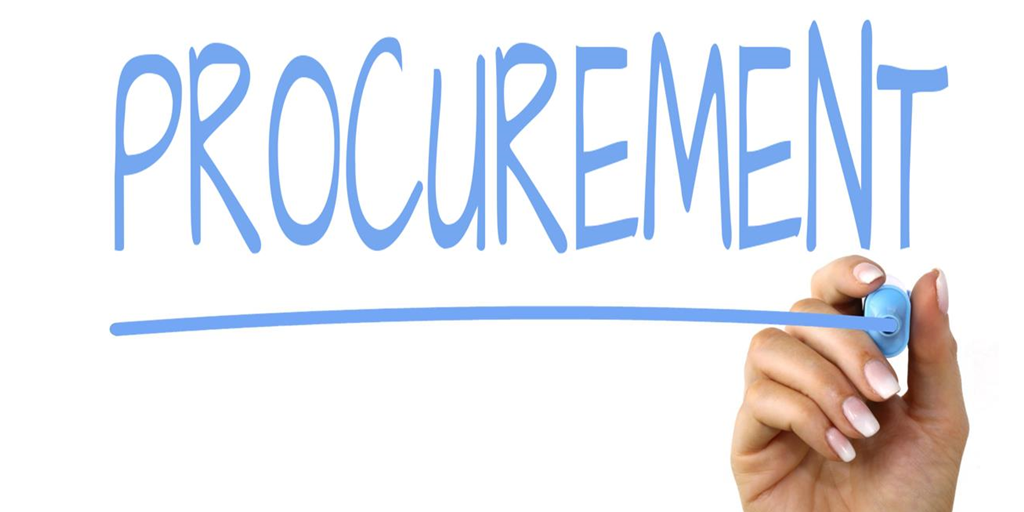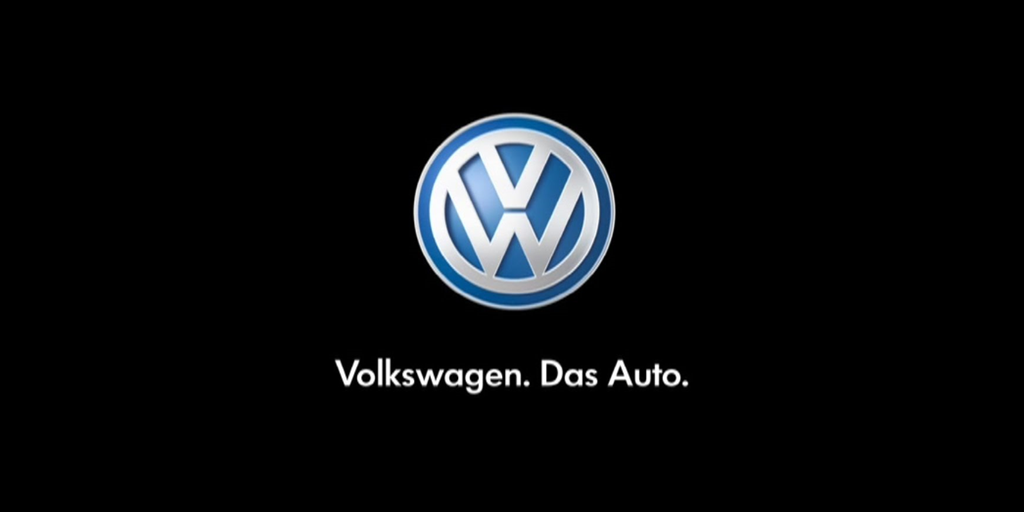
Imagine for a second that you own a global, fast-food chicken restaurant chain.
You know, one that sells Portuguese, peri-peri style chicken. The kind of place that sells lunchtime meals at dinnertime prices. You know the type I mean?
Now think. What’s the worst thing that could happen to your fast-food chicken restaurant chain?
A bout of food poisoning would be pretty bad, or a new KFC opening up right next door would be pretty demoralizing.
But what about running out of chicken? As an internationally recognized chicken restaurant, that would be pretty devastating. Right?
Well, that’s exactly what happened to Nando’s over the New Year holiday period.
We’ll come back to the Nando’s story later, but for now, let’s tuck into this Process Street post on procurement…
In one ‘fowl’ swoop, we will cover the following procurement topics:
- Procurement: What it is (and isn’t)
- Why you need to get procurement right
- How to go about procurement effectively
- Procurement in the modern world
- Digitizing the procurement process with Process Street
Egg-cited to start? Let’s go!
Procurement: What it is (and isn’t)
So, where were we..? Ah yes. Nando’s.

“Nando’s fast-food chicken restaurant made national headlines in England after running out of chicken” – Worst Procurement Blunders of 2018, ProcurePort
I know! How? How on earth did a restaurant selling chicken, and only chicken (give or take a chickpea or two), run out of chicken?
The answer? Poor, unorganized, and archaic procurement processes.
The procurement team wanted to cut costs, so they decided to forget all about the festive period. They turned a blind eye to the probable increase in demand for chicken over the bank holiday and continued to order the usual amount of chicken from their suppliers.
As a result, although they did cut costs, they ran out of chicken and lost a huge amount of profit.
Imagine telling customers, eagerly awaiting their peri-peri chicken wings, to settle for a chickpea salad instead… *shudder*
Anyway, my point is this: this disaster could have been avoided if they’d had an effective procurement process in place. One that prevents stupid decisions, like the one above.
Which is what this post is all about.
Before I go into detail about what procurement is, let me start by telling you what procurement isn’t.
Procurement: What it isn’t
“Procurement isn’t rocket science, it’s not brain surgery and it’s not curing illness” – Francis Churchill, The six fundamentals of procurement
Perhaps most importantly, procurement isn’t purchasing.

A common misconception that most people (myself included) make is that procurement is the same as purchasing.
“Procurement and purchasing are both performed when a company needs to acquire goods and services” – The Difference Between Procurement and Purchasing, Procurify
When you look at it like that, you can see why many people think they’re the same. So, let’s dispel that myth.
What is procurement?
Purchasing deals with the physical transactions of goods and services. Procurement deals with the sourcing, negotiation, and strategic selection of goods and services.
Think of it this way:
Purchasing is exactly what it says on the tin. It’s the purchasing of products and services. It’s purely transactional and is an entirely reactive process.
Procurement, on the other hand, is the brains behind the purchasing. It’s the strategic thought process that informs key buying decisions and it’s mostly a proactive process.
“Procurement involves much more than just handing over the company credit card and paying for a purchase” – Worst Procurement Blunders of 2018, ProcurePort
The basic purpose of procurement is to make sure that the organization buys the goods and services it needs to operate in a profitable way. This involves all sorts of activities, ranging from sourcing materials and services to developing relationships with key suppliers. However, the biggest responsibility that a procurement department faces is giving the business confidence that the supplier they are working with is the best supplier for them.
To help them do this, they follow a procurement process. This helps them to reduce prices, cut costs, identify better sources of supply, and make sure potential new suppliers are properly vetted.
“Through sourcing the right suppliers, procurement staff can actively help reduce their company’s outgoing costs and operational risks” – 5 Ways Procurement Professionals Can Add Value to Their Business Right Now, Achilles
In essence, the procurement team’s main function is to create and follow a strong procurement process that will help the organization reduce its bottom line.
So, with all that in mind, I think we can all egg-ree that procurement has an important role to play in all organizations.
Which leads me to my next point…
Why you need to get procurement right
We all saw what happened when Nando’s messed up their poultry procurement. I personally think it’s clear, from that example alone, why it’s so important to get procurement right.
However, research shows that half of CFOs still see procurement as nothing more than an admin role, as opposed to one that plays a significant part in helping them achieve their business objectives.
So I think it’s time to put the cat among the chickens and ruffle a few feathers.
“Business leaders outside procurement are not always aware of the daily activities that the function carries out, or the corporate priorities it can support” – 5 Ways Procurement Professionals Can Add Value to Their Business Right Now, Achilles
Sticking with the chicken theme, guess which other chicken fast-food outlet faced a problem with their procurement of poultry?
KFC.

KFC closed 650 of its UK outlets after its new supplier failed to deliver chicken to the stores that needed it.
If only KFC had included new supplier research as part of their procurement process.
Their new supplier was trying to run the whole operation out of one distribution center and didn’t have the logistic capability to deliver chicken to every store in the UK. So, with nothing else to serve, 650 stores had no choice but to close.
Still, it’s not only chicken restaurants that suffer from poor procurement processes.
Car manufacturers also suffer.

In 2016 Volkswagen hastily canceled its €500-million contract with their seat cover suppliers because they believed they were faulty. The supplier retaliated in a big way and sued the German automaker for €50 million for the work they had done to prepare their facilities for the large contract. In the end, Volkswagen reached a €13 million settlement with the supplier so they could resume the delivery of the car seat covers.
This expensive procurement mistake could have been avoided if they’d managed their supplier relationships and quality control processes better.
Hopefully, these examples are starting to show you how costly procurement fowl-ups can be, and therefore how important it is to get procurement right.
That said, I can’t give you all the bad without giving you some of the good…
How to go about procurement effectively
“Ask any business leader what their top challenge is today and more than likely, the answer will be cost” – The Power of Procurement, KPMG
As we’ve seen, procurement inefficiencies cost organizations huge chunks of cash in delayed purchases, missed discounts, transaction disputes, and damaged reputations.
What these organizations didn’t (and what many still don’t) understand is that procurement directly impacts a company’s profit. In fact, procurement can often be responsible for up to 70% of a companies revenue.
So, I suppose the million-dollar question is…. How do you get procurement right?
By having an effective procurement process in place.
Building a strong procurement process enables procurement teams to identify the true needs of the organization. It gives them the opportunity to explore the market, identify key suppliers, and negotiate favorable contract terms and pricing.
Not only that, but a solid procurement process also allows the procurement team to choose the suppliers that will add the most value and drive the biggest innovations, putting the company in a more competitive position.
An effective procurement process starts with the identification of a need and ends with the award of a timely and cost-effective contract to a supplier for the provision of quality goods, work, or services.
The Heathrow Terminal 5 project is a direct example of what an effective procurement process can offer a business.

The airport wanted to source hundreds of check-in desks and set them out in rows, like you see in most airports, to serve the 32.8 million passengers that were anticipated to fly from the terminal.
However, the procurement team, following their top-notch procurement process, was able to identify that the real business need wasn’t in serving the number of people likely to visit the check-in desks. Instead, it was moving these people quickly through the terminal.
The number of check-in desks wasn’t the solution, the type of check-in desk was!
Armed with this understanding, the procurement team suggested an alternative check-in desk which was based on a supermarket checkout. This resulted in reduced check-in times, fewer desks, lower costs, and happier customers.
So there you go! Evidence that a good procurement process can cut costs without damaging profitability.
Yet, before you start counting your chickens before they’ve hatched, there’s something else to consider. Having a solid procurement process in place will do wonders for your bottom line, but it isn’t quite enough.
Not nowadays.
Procurement in the modern world
As we’ve discussed, procurement is all about having solid processes in place that allow you to establish business needs, research the market, evaluate suppliers, negotiate contracts, and cut costs without compromising on profit.
That’s all well and good but, as a little bird once told me, in some places, procurement is still done with a pen and paper!
Yes. You did read that right.
Over 60% of organizations still rely on pens, paper, and Microsoft Office to run their procurement functions. As more and more suppliers go global, and procurement, therefore, becomes increasingly more complicated, this is crazy!

“The lack of digitization is holding procurement teams back as many businesses are unprepared to face today’s rapidly shifting business landscape” – Procurement Failures Costing UK Businesses Millions, IT ProPortal
When key parts of the procurement process are written out on bits of paper, stuffed into folders, hidden in filing cabinets, or manually entered into excel spreadsheets, it becomes messy to manage, mistakes happen, and the whole operation slows to a halt.
Attempting to speed up the procurement process with outdated tools like spreadsheets and emails is like trying to start a microwave with flint and steel.
Procurement teams often find themselves stuck in “production mode”. They spend their time manually processing orders, progressing contracts, and clearing backlogs. They have no time to research the market, develop key supplier relationships, add any value, or think strategically.
This probably explains why half of CFO’s still see them as little more than basic paper pushers.
So what’s the solution?
Go digital or go home.
Digitizing the procurement process with Process Street
“Given today’s political and economic instability, enforcing a well-defined procurement system can help organizations manage their supply chain and associated risks” – You Didn’t Know These 7 Steps of an Effective Procurement Process, Zycus
As we discovered earlier, almost a third of procurement teams are handling their procurement activities in the old fashioned way.
Procurement processes, therefore, tend to be simplistic and inflexible. There’s no room to drive strategic cost savings, bring about new procurement methods, or partner with better suppliers.
Companies are missing a massive opportunity to save time, cut costs, and gain competitive advantage.
That opportunity lies in digitizing procurement processes.
Research shows that by implementing a digital procurement function could save the global 5000 up to $86 billion annually.
Digitizing your procurement processes will help you with day-to-day decision making and give you visibility of the entire supply chain. It will eliminate overspending, yield huge savings (both time and money), and give you access to data that will help inform strategic decision-making.
So how do you digitize your procurement processes?
Look no feather, we have your back.
Digitizing your procurement processes with Process Street
Process Street is super-powered checklists. We are a super-charged, state of the art BPM SaaS platform which allows you to create templates and run individual checklists. You can check tasks off as you work through them, set deadlines, request approval, assign tasks, and track each team member’s progress.
Watch this to get an idea about who we are and what we do before I tell you how we can help:
Ok, back to digitizing your procurement processes.
So you know digitizing your procurement can save you money, but do you know how much? Digitizing procurement can generate cost savings of between 5-10% as well as increasing efficiency by 30-50%.
How will it do that?
Through process automation.
Process automation is the use of technology to execute recurring tasks or processes in a business.
“Automating procurement processes can have a significant impact on your company’s bottom line” – What is the Difference Between Procurement and Purchasing, Procurify
Choosing to automate your procurement processes, rather than depending on paper, emails, and excel sheets, will speed up your procurement processes, ensure accuracy, enhance efficiency, and save time and resources.
Did I mention that process automation is our specialty? I told you we had your back!
If you’re unfamiliar with process automation and the benefits it can bring to your business, watch this Process Street webinar on automation.
Alternatively, you can read our free e-book on the topic: The Ultimate Guide to Business Process Automation. It’s the perfect process automation guide for beginners and veterans alike.
I know this might be a lot to take in and I’ll bet you have a thousand questions. What to do next? Where to start? When to start? What will it cost?
Well, I have answers to all those questions.
We’ve created the below Procurement Process Checklist Template for you.
You can use it right this second. It’s completely free and it’s been designed to streamline your procurement processes and keep them transparent.
I guarantee that, if used properly, this procurement process checklist will:
- Minimize the chaos made by paperwork
- Reduce human error
- Lessen the workload of all stakeholders
- Keep the process accurate and consistent
- Inject transparency into your workflows
We also have the following procurement-related checklists that you can use, straight-out-of-the-box if you wish!
Procurement-related checklists
You can adapt these checklists to fit within with your procurement checklist or you can use them alongside it.
Use this checklist to make sure you’re choosing a supplier that communicates well, gives the best deals, and has the highest quality service.
Click here to get the Vendor Management: Supplier Evaluation checklist!
Use this checklist to communicate with suppliers, gather your requirements, finalize your needs, and then complete the actual negotiation itself.
Click here to get the Vendor Management: Contract Negotiation checklist!
Use this checklist to manage your purchase order workflow so you can seamlessly track progress in real-time and shorten purchasing cycles.
Click here to get the Purchase Order Workflow Template!
Use this checklist to provide checks and balances for all outgoing payments to suppliers for their goods or services.
Click here to get the Accounts Payable Process!
If these checklists don’t quite fit your company or industry, don’t worry! You can add all these different types of features into your checklist to super-charge your automated procurement processes and make your workflows sing:
- Stop tasks
- Dynamic due dates
- Task permissions
- Conditional logic
- Approval tasks
- Embed widget
- Role assignments
You can also connect your procurement processes to thousands of apps through Zapier, webhooks, or API access.
We understand that ease of use cannot be overestimated with this type of thing. Systems need to be intuitive with an easy learning curve.
This is exactly what Process Street is. See for yourself. All you need to do is sign up for a free trial here, and you’re away.
Still hungry for more on procurement? Fill your beaks with these procurement-related articles too.
Procurement and process automation articles
- How to Build a Better Purchase Order Workflow with Process Street
- What is a Purchase Order Template? 5 Free Templates to Get Started
- Purchase Requisition: How to Get Finance to Buy You New Software
- What is Business Process Management
- Purchase Requisition: How to Get Finance to Buy You New Software
- Top Business Process Management Software
I hope you’ve found this post on procurement useful but, if nothing else, I hope you’ve ‘appreciated’ my chicken puns!
Before I eggs-it, I will leave you with a little something to mull over:
Fewer than 10% of companies are using key technologies in procurement. This represents a huge opportunity to beat your competitors, cut costs, and boost profits, by creating digital procurement processes.
Be the early bird that catches the worm.

We’d love to hear about your experiences with procurement in the comments. Who knows? You may even get featured in an upcoming article!







 Workflows
Workflows Projects
Projects Data Sets
Data Sets Forms
Forms Pages
Pages Automations
Automations Analytics
Analytics Apps
Apps Integrations
Integrations
 Property management
Property management
 Human resources
Human resources
 Customer management
Customer management
 Information technology
Information technology



Amanda Greenwood
Amanda is a content writer for Process Street. Her main mission in life is to write content that makes business processes fun, interesting, and easy to understand. Her background is in marketing and project management, so she has a wealth of experience to draw from, which adds a touch of reality and a whole heap of depth to the content she writes.